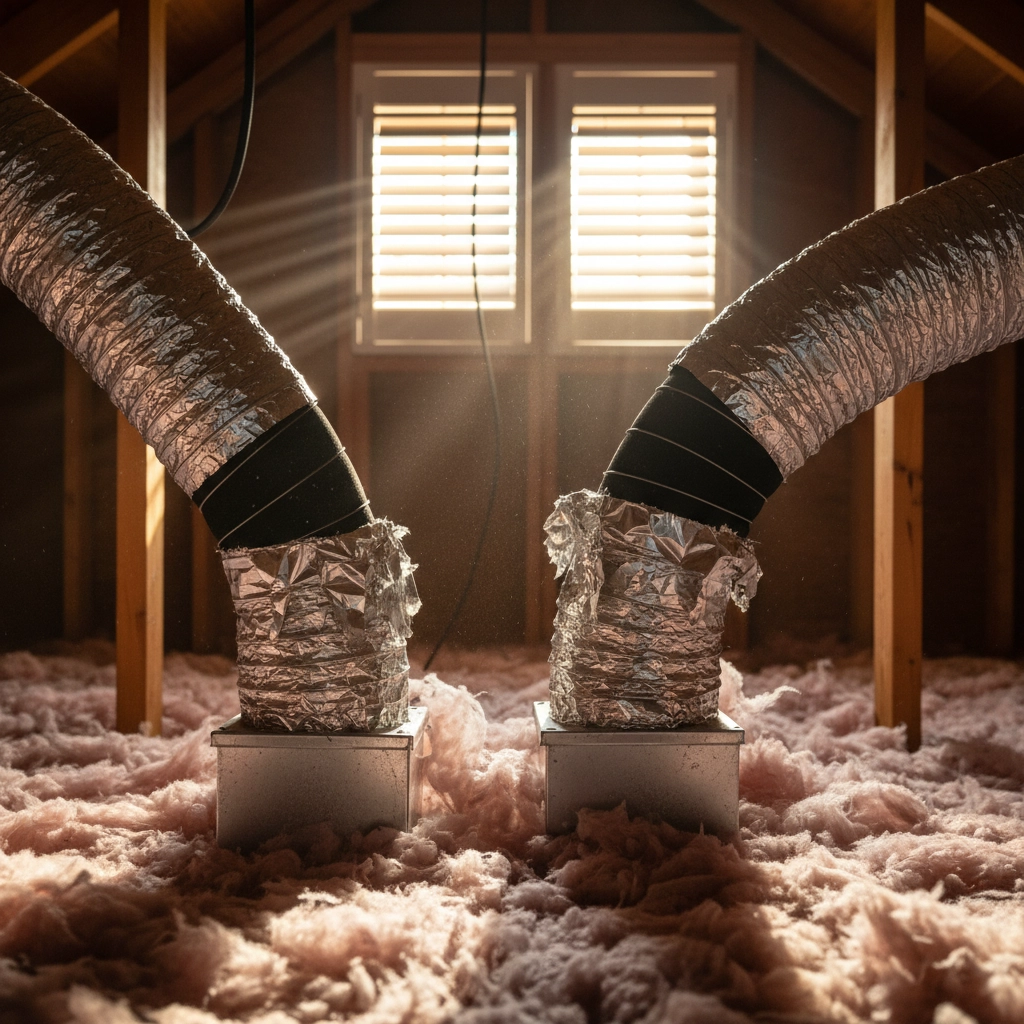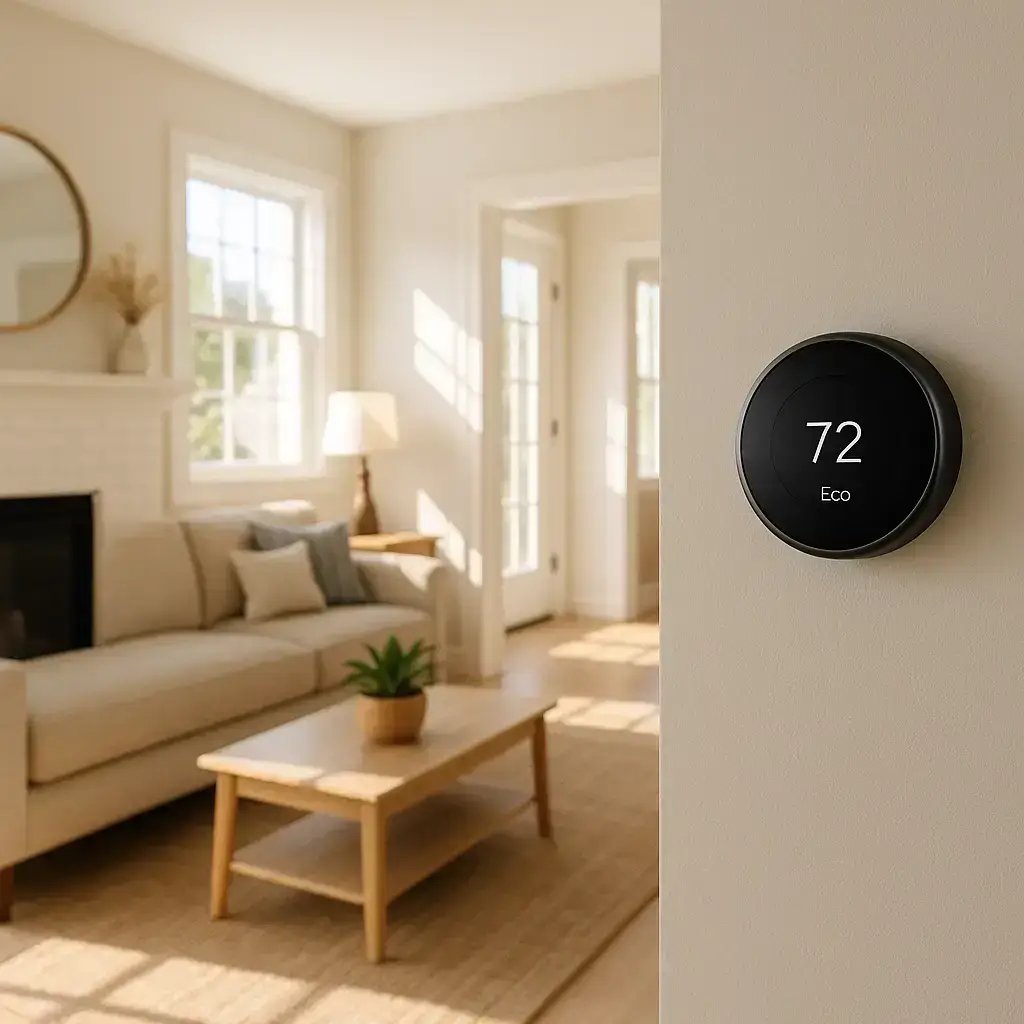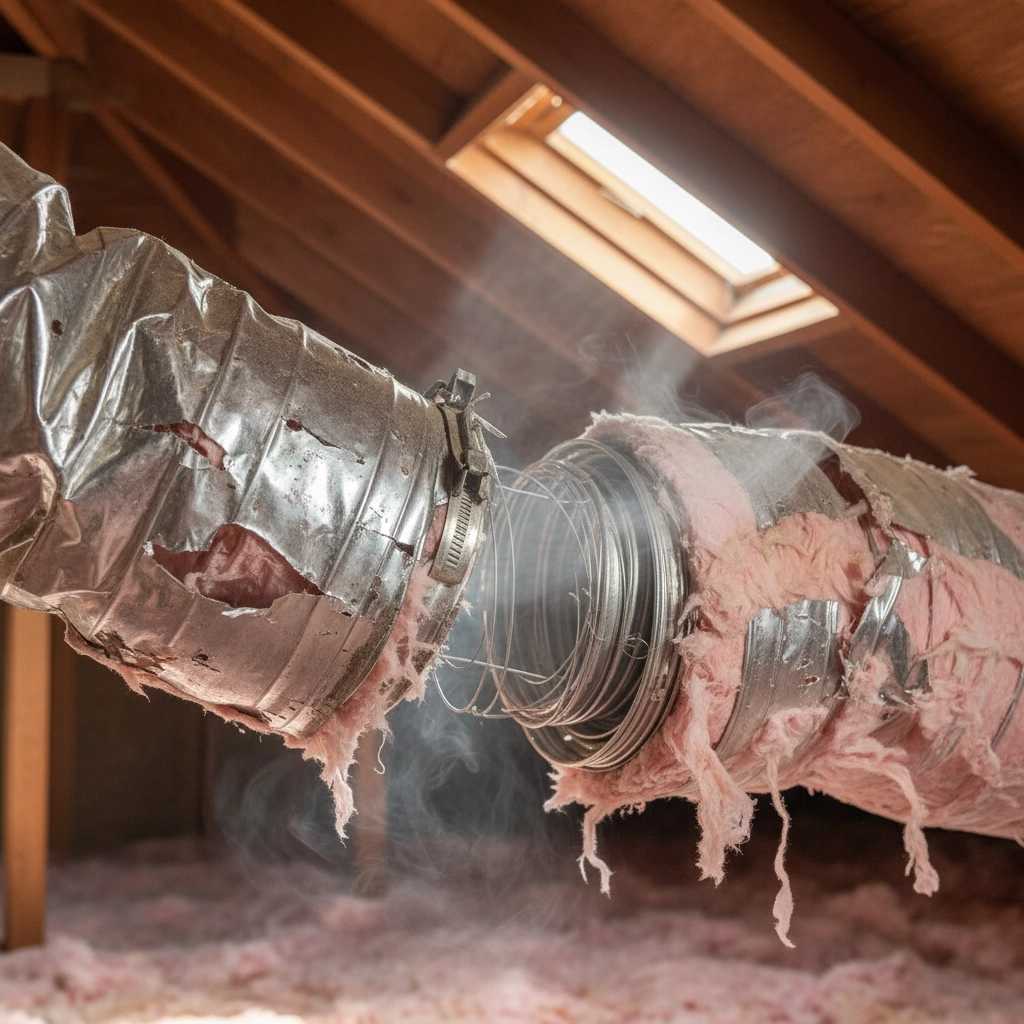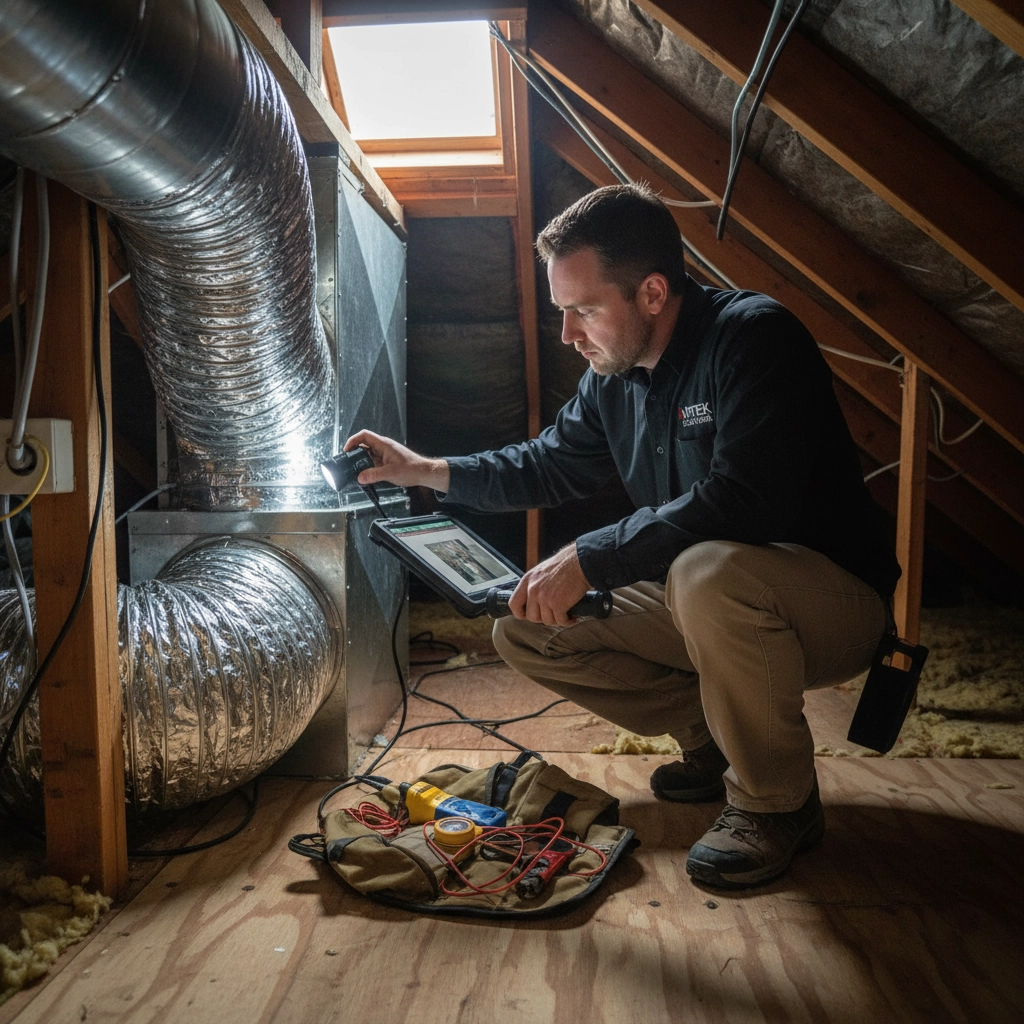Losing Cooling (and Cash): How Leaky Ducts Drain Your Comfort and Your Wallet
You crank up the AC on another scorching Austin day, but your upstairs bedrooms feel like a sauna while your living room is an icebox. Your energy bill keeps climbing, yet you never seem comfortable. Sound familiar? You might be dealing with leaky ducts – one of the most expensive and frustrating problems hiding in plain sight throughout Central Texas homes.
Here’s the thing: your HVAC system might be working perfectly, but if your ductwork has leaks, you’re literally paying to cool your attic, crawl space, or walls instead of your living spaces. It’s like trying to fill a bucket with holes in the bottom – no matter how hard your system works, you’ll never get the results you’re paying for.
What Exactly Are Leaky Ducts?
Think of your ductwork as the circulatory system of your home. Just like blood vessels carry blood throughout your body, ducts carry conditioned air from your HVAC unit to every room. When there are holes, gaps, or disconnections in this system, that precious cooled or heated air escapes before it reaches where you need it most.
The problem is sneaky because most of your ductwork is hidden in attics, crawl spaces, or inside walls where you can’t see what’s happening. You just know something’s not right when rooms stay uncomfortable despite your system running constantly.
The Comfort Catastrophe: Why Your Home Feels All Wrong
When ducts leak, you get what HVAC pros call “comfort complaints” – and boy, are they frustrating. Some rooms become too hot in summer and too cold in winter, while others might feel just right. You’ll find yourself constantly adjusting the thermostat, moving from room to room looking for relief, or piling on blankets in one area while cranking up fans in another.
But temperature isn’t the only issue. Leaky ducts also mess with your indoor air quality. When return ducts (the ones that pull air back to your system) have leaks, they can suck in dust, allergens, and humidity from attics or crawl spaces. In Texas, where we battle high humidity and allergens year-round, this can make your home feel stuffy and trigger allergy symptoms even when your system is running.
The Financial Drain: Your Money Vanishing Into Thin Air
Here’s where leaky ducts really hurt your wallet. Studies show that duct leakage can waste up to 30% of your conditioned air. Let’s break that down in real Austin dollars.
The average Central Texas household spends about $2,200 annually on heating and cooling. If your ducts are leaking just 20% of your conditioned air (which is actually pretty typical), you’re wasting around $440 every single year. That’s money you’re spending to cool your attic instead of your bedroom, or heat your crawl space instead of your kitchen.
Over ten years, that’s $4,400 – enough for a nice vacation or a hefty chunk of a new HVAC system. And here in Texas, where we rely heavily on air conditioning for most of the year, the losses can be even steeper.
But wait, it gets worse. When your system can’t efficiently cool or heat your home due to duct leaks, it runs longer and works harder trying to reach your thermostat setting. This extra runtime doesn’t just waste energy – it wears out your equipment faster, leading to more repairs and shorter system life.
The Usual Suspects: Common Causes of Duct Leaks
Understanding how ducts develop leaks can help you spot potential problems before they become expensive headaches. Here are the most common culprits we see in Austin-area homes:
Small Rips and Tears
Over time, ductwork can develop small tears from age, vibration, or settling. These might seem minor, but even a small hole can leak a surprising amount of air. The good news? Small tears are often easy to patch with proper duct sealant or metal tape.
Loose Connection Points
Ducts connect to each other and to your HVAC unit at joints and seams. These connection points can work loose over time, especially in attics where Texas heat causes expansion and contraction cycles. A loose connection might seem small, but it can leak as much air as a gaping hole.
Insulation and Sheathing Issues
Many ducts are wrapped in insulation and protective sheathing. When this outer layer deteriorates or comes loose, it can create air leaks and allow conditioned air to escape into unconditioned spaces. This is especially common in older homes where insulation has compressed or shifted over time.
Rodent and Pest Damage
This is a big one in Texas. Squirrels, rats, and other critters love to nest in attics and can chew through ductwork, creating significant leaks. We’ve seen cases where animals have torn huge holes in flexible ducts or chewed through insulation, creating major efficiency problems.
Red Flags: Signs Your Ducts Might Be Leaking
Since most ductwork is hidden, you have to play detective to spot duct leaks. Here are the warning signs to watch for:
Uneven temperatures are the biggest giveaway. If some rooms are always too hot or cold despite your system running, suspect duct leaks.
High energy bills that keep climbing even though your usage habits haven’t changed could indicate your system is working overtime due to duct leaks.
Dusty rooms that need frequent cleaning might be getting extra dust pulled in through return duct leaks.
Your system runs constantly but never seems to reach the thermostat setting, especially on mild days when it should cycle on and off.
Stuffy air or increased allergy symptoms might indicate return duct leaks are pulling in contaminated air from unconditioned spaces.
The Professional Solution: Why DIY Isn’t Always Enough
While you might be tempted to grab some duct tape and start sealing visible joints (and despite its name, duct tape is actually terrible for sealing ducts), most duct leakage problems require professional attention. Here’s why:
First, finding all the leaks requires special equipment. Professional HVAC technicians use tools like thermal imaging cameras to locate hidden leaks that you’d never spot with the naked eye.
Second, proper duct sealing requires the right materials and techniques. Professional-grade duct sealants and metal tapes are designed to handle temperature changes and last for years, while DIY solutions often fail within months.
Finally, some duct problems require more than just sealing. Damaged sections might need replacement, or the entire duct system might need redesigning to improve airflow and efficiency.
At Accu-Temp, we’ve been helping Austin-area homeowners solve duct problems for years. Our technicians can perform a comprehensive duct inspection, identify all leak sources, and provide lasting repairs that restore both comfort and efficiency. We’ve seen homeowners cut their energy bills by 20-30% just by properly sealing their ductwork.
Don’t Let Your Comfort and Cash Escape
Leaky ducts are one of those problems that get worse over time, not better. That small tear will grow, loose connections will get looser, and your energy bills will keep climbing. The good news is that duct sealing typically pays for itself within a few years through energy savings, and the comfort improvement is immediate.
If you’re dealing with uneven temperatures, high energy bills, or that nagging feeling that your HVAC system just isn’t performing like it should, it might be time to have your ductwork inspected. Don’t let another summer pass paying to cool your attic instead of your home.
Ready to stop the leak and start saving? Contact Accu-Temp today for a professional duct inspection and see how much comfort and cash you could be getting back.





